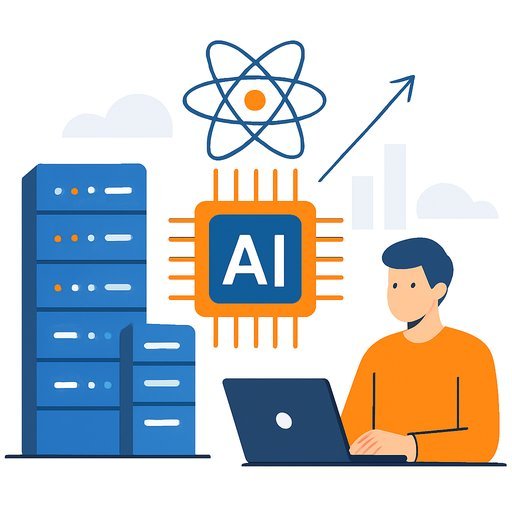Future of Finance: AI's Practical Playbook for Banking and Wealth
AI is moving from pilots to production in finance. The takeaway: it helps you scale advice, strengthen trust, and sharpen decisions without losing the human relationship that clients value.
Below are distilled insights from leaders across OCBC, UOB, DBS, and HSBC on what is working now, where the risks sit, and how to apply it inside your teams.
What's making a difference for investors right now
- Personalisation at scale: From OCBC's agentic AI pilots to UOB's TMRW app, firms are using models that read behavior, preferences, and goals to surface relevant content, ideas, and next actions. The shift is from reactive service to proactive, insight-led engagement.
- Productivity that frees up advisors: OCBC's source-of-wealth tool cut report prep from 10 days to 1 hour. HSBC's Wealth Intelligence platform synthesises input from over 10,000 sources so advisors walk in with sharper context and faster recommendations.
- Decision support, not autopilot: UOB's team curates model outputs to avoid blind spots, especially during rare events. Human judgment remains the filter for risk, nuance, and suitability.
- From data pipes to advice engines: DBS blends digital workflows, ML, and large language models to reduce internal toil and give clients precise nudges. The result: more time for advisory, less admin.
Trust and loyalty: protect first, then stay useful
Loyalty follows consistent protection and relevance. OCBC uses AI-enabled surveillance to fight scams and cyber threats, while running millions of micro-decisions daily to improve interactions. UOB and DBS report similar shifts: smarter prevention plus meaningful personalisation.
Firms are putting guardrails around model risk, privacy, and bias. UOB aligns with the Monetary Authority of Singapore's FEAT principles for responsible AI. If you are refreshing your framework, this resource is a helpful benchmark: MAS Responsible AI (FEAT).
Bespoke advice for everyone, not just private clients
- OCBC: Tools such as Holmes AI, AI Oscar, and Markets Watch serve different segments with focused insights. Engineering teams now use AI to prototype and test advisory engines against thousands of scenarios to keep advice accurate and compliant. Target: 75% of service requests AI-assisted by 2027.
- UOB: The TMRW app delivers content by experience level, learns from behavior, and prompts bankers with dynamic portfolio guidance. Digital-first, with human follow-through when stakes rise.
- DBS: Over 100 AI/ML models read more than 15,000 attributes to deliver fit-for-purpose nudges. In Singapore, users who engaged saved 2x more, invested 5x more, and were nearly 3x more adequately insured than non-users. Model replication is underway across Asia.
- HSBC: Advisors use a Virtual CIO dashboard for real-time indicators, scenario testing, and idea origination. Goal-based tools and bite-sized content help affluent clients act with confidence.
ESG and impact: from claims to evidence
Clients want returns that fit their values, and they want proof. AI helps by processing unstructured sources-transcripts, filings, news, even satellite imagery-to validate company claims and flag greenwashing. That supports clearer, more defensible ESG decisions.
- OCBC and UOB: Models track real-time ESG signals and spot inconsistencies across disclosures, ratings, and media. This supports due diligence across varied markets and rules.
- DBS: GenAI built into ESG risk checks speeds client due diligence and highlights red flags. Models help surface high-impact funds mapped to regional themes like renewables.
- HSBC: NLP quantifies outcomes (for example, emissions avoided), so families can link portfolios to causes such as climate resilience or education with more clarity.
If SGFinDex is part of your data strategy, it can strengthen advice relevance via secure aggregation: SGFinDex overview.
Risk, limits, and the human layer
Models are trained on history. During shock events, signals can misfire. That's why the human layer matters-especially for suitability, changing goals, and context that data can miss.
Key risks called out by the banks: hallucinations, biased outputs, privacy exposures, and poor change control. Mitigations include clear governance, rigorous monitoring, dataset documentation, feedback loops from advisors, and explicit escalation paths.
What finance leaders can do this quarter
- Prioritise two high-ROI use cases: a client-facing personalisation stream and an advisor-facing copilot that cuts prep time.
- Tighten data pipelines: unify customer, product, and market data with clear lineage, consent, and retention policies.
- Ship human-in-the-loop workflows: give advisors the final say; log overrides to improve models and compliance.
- Stand up an AI risk register: map model purpose, inputs, failure modes, testing cadence, and owner on one page.
- Measure what matters: time-to-advice, client action rate, call prep time saved, AUM net flows, and complaint rate.
- Upskill the front line and tech: short, practical training beats long theory. Pair product, data, and advisory teams on weekly iterations.
The bottom line
AI is making advice more personal, faster, and safer-when paired with strong controls and real human judgment. Start with narrow use cases, measure outcomes, and keep clients at the center. That's how you earn trust and keep it.
Your membership also unlocks:





